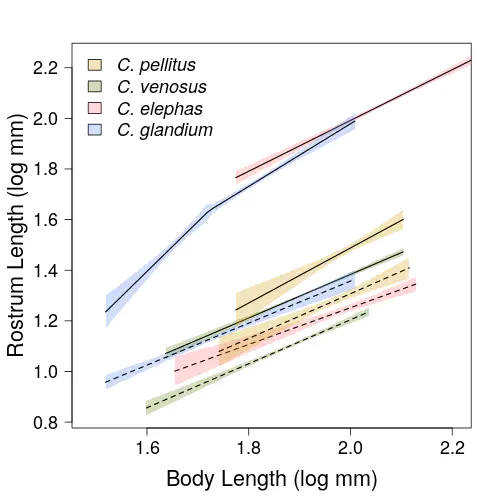Morphological allometry and species coexistence
 Photo by emilie.fleurot
Photo by emilie.fleurotMorphological allometry corresponds to the way trait size scales with body size. This relation has been shown to reflect ecological adaptation of organisms to their environment and more particularly to the mean size of the resource exploited. Working on four coexisting weevil species, we wanted to test if the allometric relationship between rostrum, an oral appendage used to drill holes in acorns prior to egg laying, and body length differ between species. The four weevil species, that coexist on the same individual trees, display distinct egg-laying periods, corresponding to distincts acorn’s developmental stages. With this study we showed that :
- Marked differences in the allometric slope exists, species laying eggs late in the season on big acorns having a steeper allometric slope
- The species with the longest oviposition period has the most variable rostrum length, matching with the highly variable size of the exploited resource
This work led to an article.